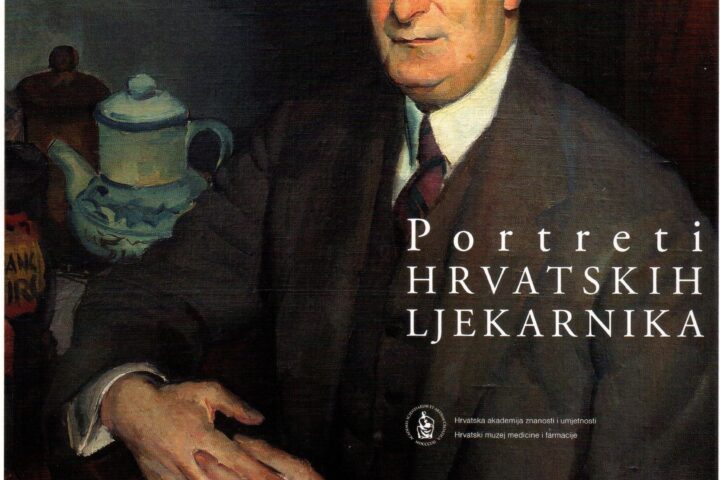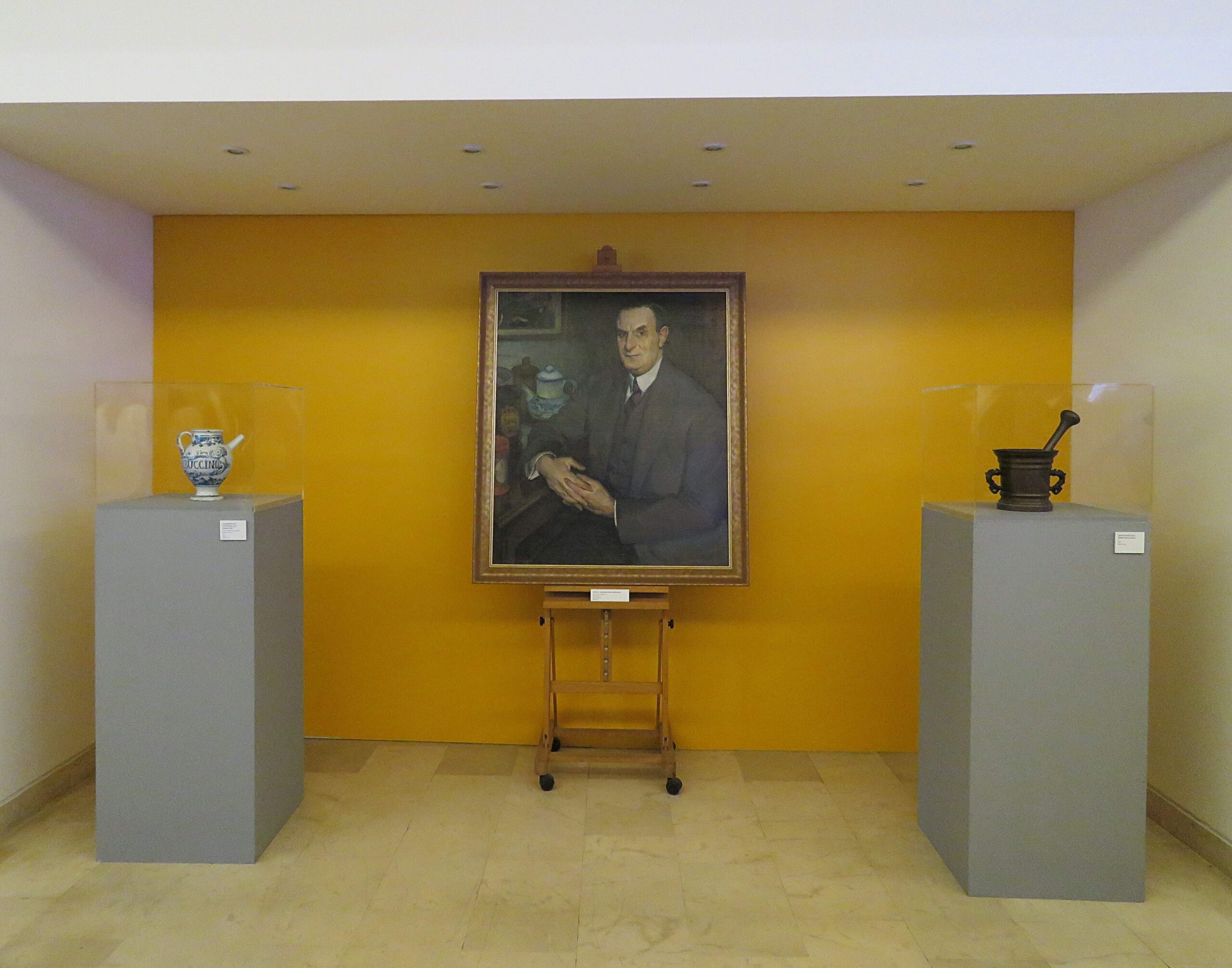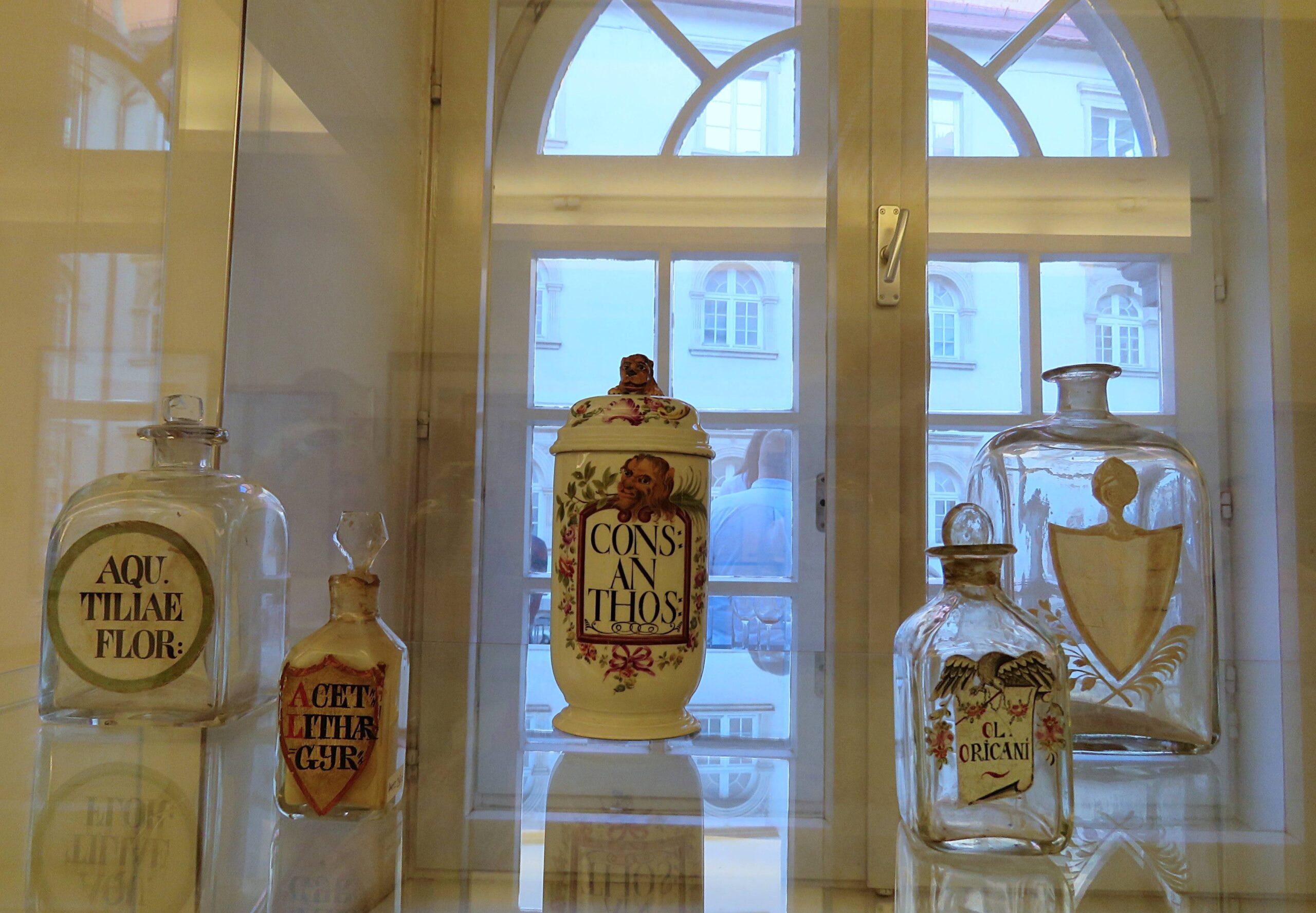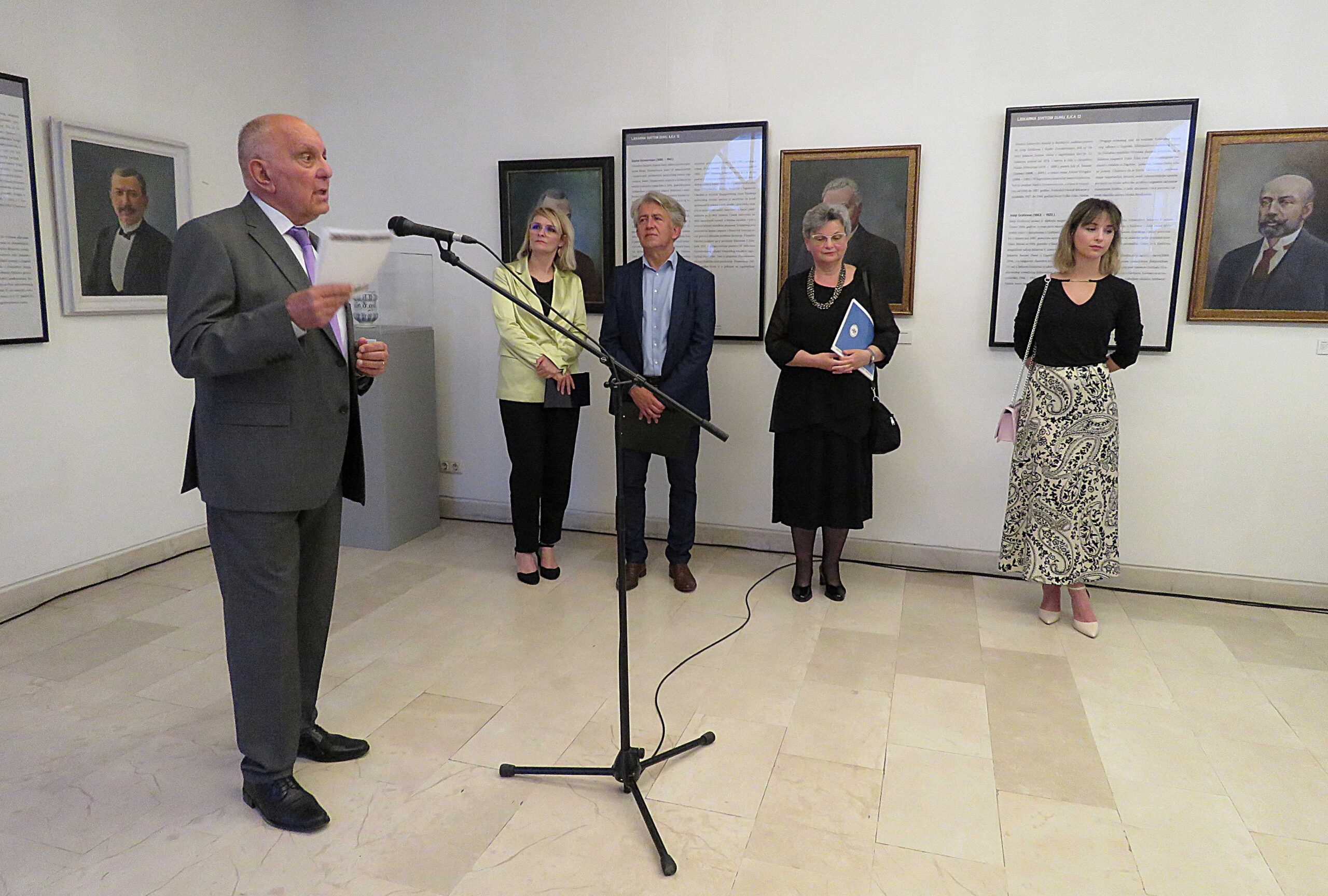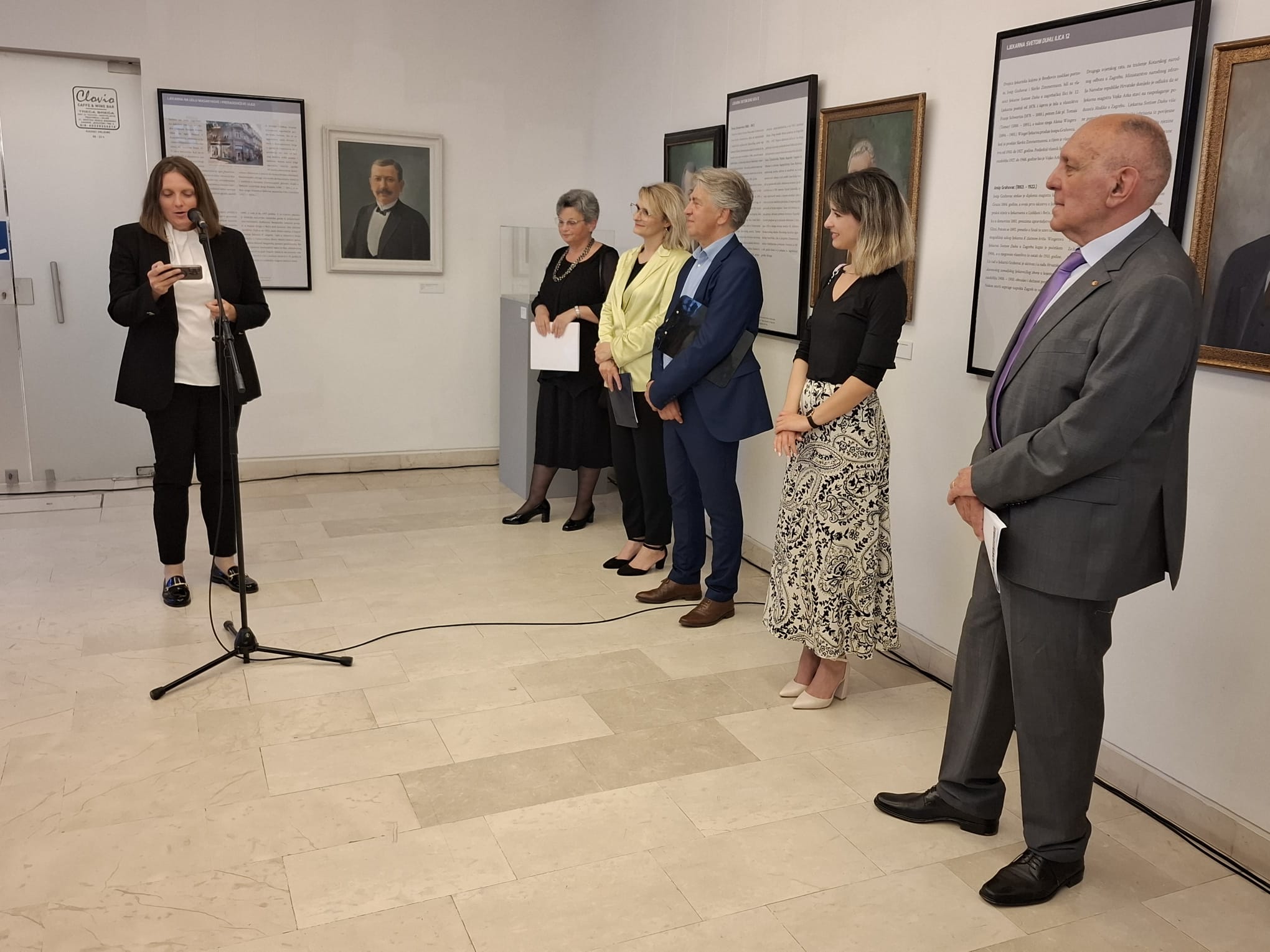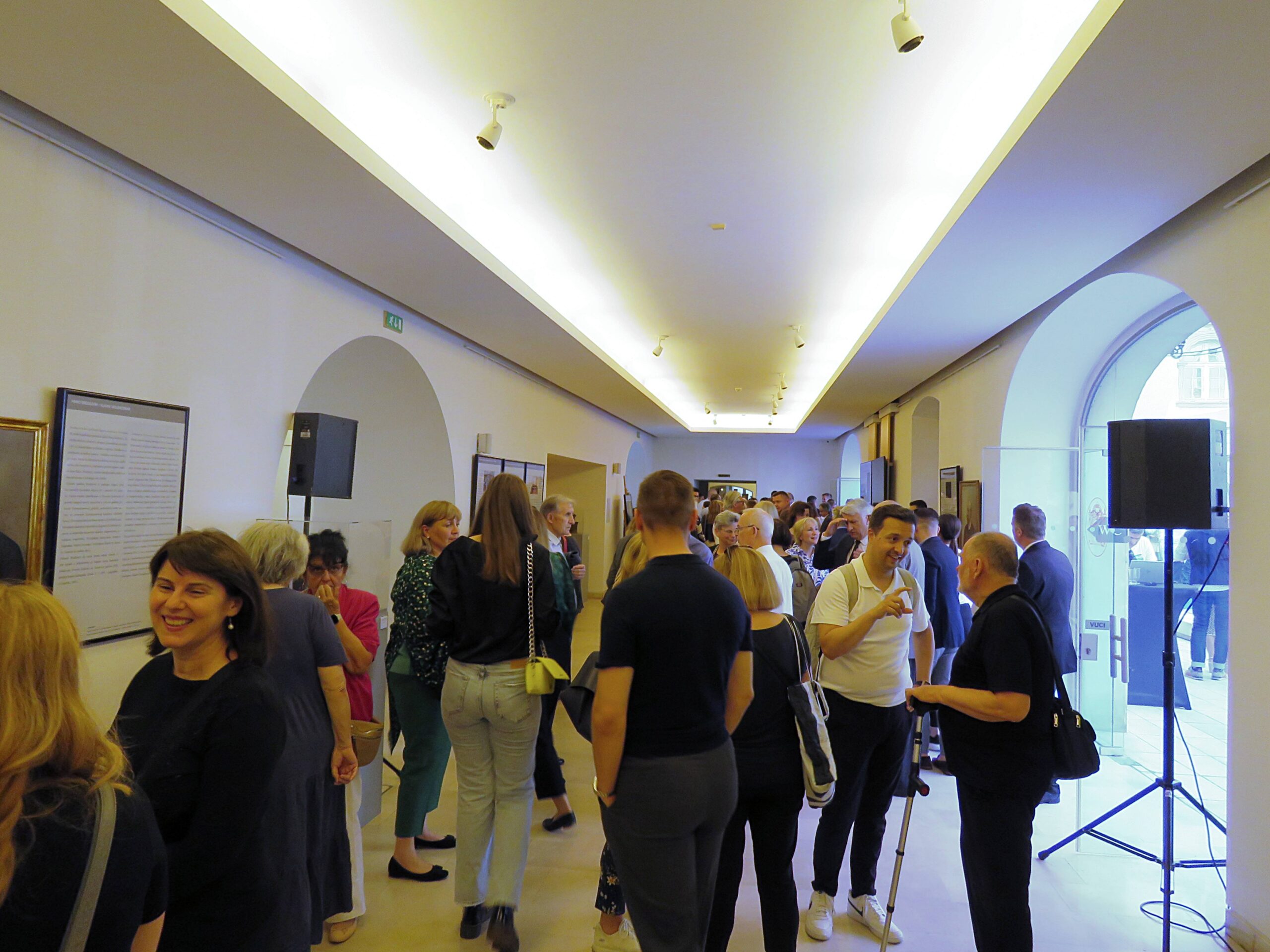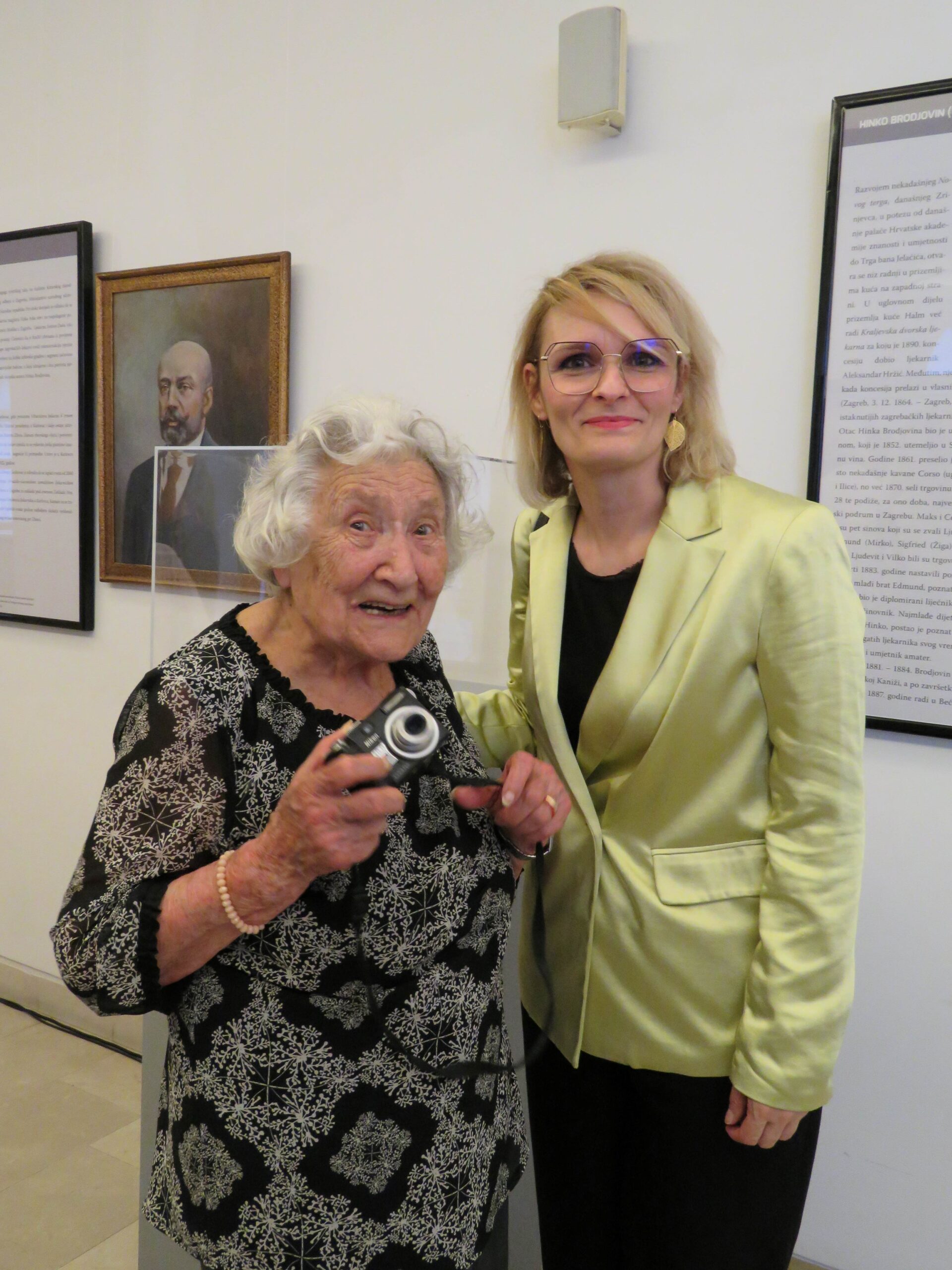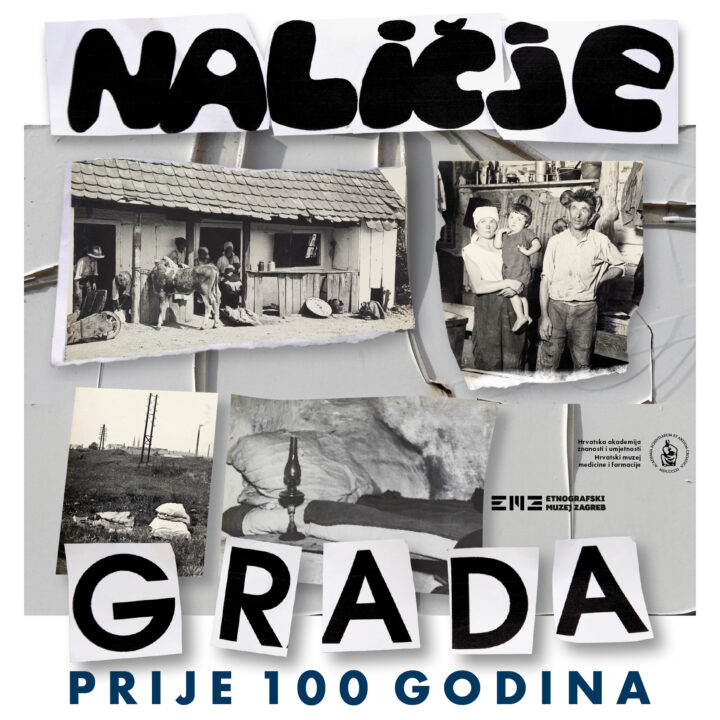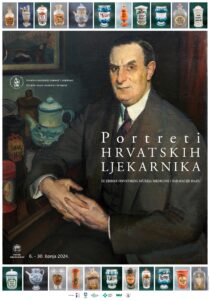
Exhibition
Portraits of Croatian Pharmacists from the Collection of the Croatian Museum of Medicine and Pharmacy, Croatian Academy of Sciences and Arts
Klovićevi dvori Gallery, Zagreb, June 6-30, 2024.
The exhibition in the foyer of the Klovićevi dvori Gallery presents nine portraits of Croatian pharmacists from the holdings of the Croatian Museum of Medicine and Pharmacy, CASA. These are prominent pharmacy owners who were in certain periods the presidents of the Croatian Association of Pharmacists, including the author of most of the portraits – the pharmacist Hinko Brodjovin. The main attraction at the exhibition is the portrait of Hinko Brodjovin, a work by Milivoj Uzelac that has not been presented to the public until now. Along with the paintings, exhibition posters with descriptions and photos of old pharmacies run by the portrayed pharmacists and short biographies of the portrayed persons were placed, and as accompanying material, objects from the pharmacy of Hinko Brodjovin, also from the Museum’s holdings, are exhibited. The brochure of the exhibition contains an overview of the role of the portrayed persons in the history of Croatian pharmacy and a summary of the exhibition.
The aim of the program is to acquaint the Croatian and international audience with the valuable art material kept in the Croatian Museum of Medicine and Pharmacy, which has not been presented to the public until now. The exhibition and brochure are designed to shape the story of portrayed pharmacists from the end of the 19th and the first half of the 20th century who played important roles in the Croatian pharmaceutical profession, society and culture, especially in the public life of Zagreb, and at the same time point to the artistic value of the exhibited portraits.
In the Collection of Paintings, Prints and Sculptures of the Croatian Museum of Medicine and Pharmacy of the Croatian Academy of Sciences and Arts, the previously unknown and unpublished work of Milivoj Uzelac, Portrait of Pharmacist Hinko Brodjovin, is preserved. During the preparation for carrying out the conservation and restoration works on the painting, it was determined that the signature of Milivoj Uzelac is authentic.
Milivoj Uzelac was Croatian painter, graphic artist and illustrator (Mostar, July 23, 1897 – Pasto Sobre near Cotignac, France, June 6, 1977). In Zagreb (1912) he attended the painting school of T. Krizman, then (1913–14) the Temporary School for Arts and Crafts (O. Iveković). As a military fugitive in Prague (1915–19), he occasionally attended the Academy, working under the guidance of Jan Preisler. He returned to Zagreb in 1919, and already in 1923 he went to Paris, where he lived until 1963, when he retired to the Pasto Sobre estate in southern France. Stylistically, he moved from expressionism to neocubism to neoclassicism. At the exhibitions of the Spring Salon in Zagreb after the First World War, he attracted attention with his temperamental compositions, nudes and portraits, painted in his own version of expressionism and cubo-expressionism.
The backbone of the exhibition is a collection of eight portraits of Croatian pharmacists painted by Hinko Brodjovin. These are prominent pharmacy owners who in certain periods were the heads of the Croatian Association of Pharmacists: Josip Grahovac, Drago Jelinek, Žiga Ključec, Slavko Zimmermann, Oton Löschner, Anton Ernest Katkić, including a self-portrait of the author of most of the portraits – pharmacist Hinko Brodjovin.
Hinko Brodjovin, Croatian pharmacist (Zagreb, December 3, 1864 – September 6, 1941), graduated in pharmacy in Zagreb in 1887. After finishing his studies, he worked in Vienna and Split. He was the owner of the royal pharmacy K Zrinjskom on the corner of Zrinski Square and present-day Tesla Street in Zagreb in the period from 1894 to 1928, when he sold the concession to Josip Salopek.
Brodjovin broke into the market at that time with the famous BabyMira children’s cream and soap, which he named after his daughter. He was also involved in activities related to the development of the profession and the promotion of pharmaceutical class interests. From 1895 he was a member of the Council, and from 1903 to 1908 he was the head of the Croatian-Slavonic Land Pharmacists’ Association, and he called for the revision of the Law on Pharmacy. In his free time, he painted and collected works of art. At the beginning of the 20th century, he attended Oton Iveković’s private painting school. At the collective exhibition held in 1901 in the Art Pavilion, he presented himself with seven works. He painted a copy of Čikoš’s painting Nikola Šubić Zrinjski in front of the gates of the Siget fortress for the facade of his pharmacy building. He collected a significant collection of Croatian painters of the 19th and 20th centuries. In pharmacy circles, he is also known as a donor.
As accompanying material, the exhibition presents selected objects from the holdings of the Croatian Museum of Medicine and Pharmacy that originate from Hinko Brodjovin’s pharmacy in Zagreb: a decorative mortar, old faience, porcelain and glass apotecary jars and packaging for pharmaceutical products.
IMPRESSUM OF THE EXHIBITION
ORGANIZERS: Croatian Museum of Medicine and Pharmacy HAZU, Academician Marko Pećina, Head of the Museum; associate professor PhD Stella Fatović-Ferenčić, MD, deputy head of the Museum; Silvija Brkić Midžić, museum advisor, director of the Museum
AUTHORS OF THE EXHIBITION: Silvija Brkić Midžić and Stella Fatović-Ferenčić
EXHIBITION CURATOR: Anamarija Komesarović, curator of Klovićevi dvori Gallery
ART SETTING OF THE EXHIBITION, VISUAL IDENTITY AND GRAPHIC DESIGN OF EXHIBITION MATERIALS: Studio Rašić, Ante Rašić
PREPRESS: Studio Rašić, Ankica Penava-Pejčinović
CONSERVATION AND RESTORATION WORK ON PAINTINGS: Denis Vokić
Maja Crkvenčić (Uzelac: Portrait of Hinko Brodjovin); Jasminka Podgorski (Brodjovin’s self-portrait)
PHOTOS OF OLD PHARMACIES IN ZAGREB: Gordana Jerabek
TECHNICAL SETUP: Technical service of Gallery Klovićevi dvori – team leader Dragutin Matas, Tomislav Antolić, Nino Bellen, Josip Butorac, Boris Krepelnik, Davor Markotić
The exhibition was realized thanks to the support of the Ministry of Culture and Media of the Republic of Croatia, the City Office for Culture and Civil Society of the City of Zagreb, the CASA Foundation, the Croatian Chamber of Pharmacists, the City Pharmacy Zagreb and the Croatian Pharmaceutical Society.

